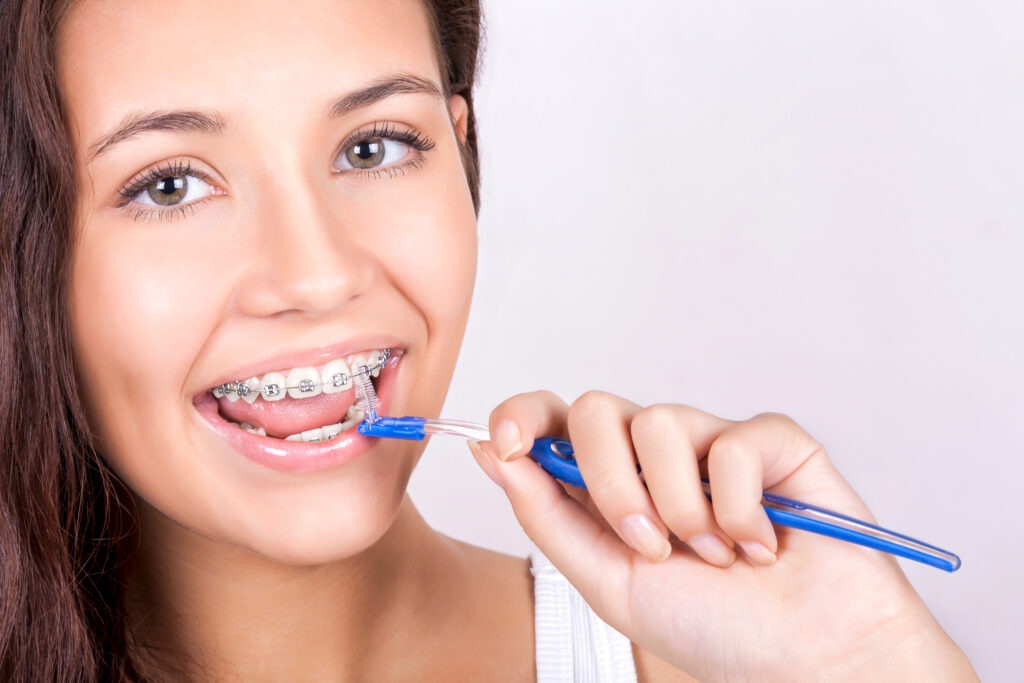
Appointment Request Invisalign®.btn-blk { display: flex; justify-content: flex-start; align-items: center; margin-bottom: 20px; } .btn-blk a.btn { cursor: pointer; padding: 10px 20px; border-radius: 5px; color: #fff; margin-right: 10px; background: #0e1116; } .btn-blk a.btn:hover { background: #053e67; }Whether we like it or not, our smile and the condition of our teeth play a huge role in our self-esteem. In fact, a recent study by the American Dental Association found that nearly 30 percent of young adults are so insecure about their smile that they feel it has interfered with their ability to interview for a job. But just because you’re an adult doesn’t mean it’s too late to do something about your teeth – especially if they aren’t as straight as they could be. Whether you are considering braces for yourself or are wondering whether it’s better to wait for your child to reach adulthood to get braces, here are some common questions and answers about adult braces.Is it ever “too late” to get braces?No! In fact, we are currently treating an 80-year-old patient with Invisalign®. As long as your mouth and teeth are in good health, you can get braces at any age. The type of braces and the duration they must be worn will vary, but it is never too late to straighten your healthy teeth.Is it better to get braces as a child or as an adult?Some people may mistakenly think it’s better to wait to get their child braces until he or she is older because the child will be more responsible and take better care of their teeth. But this isn’t always true. While it is more likely that an adult will take better care of their teeth, most teens can be entrusted with their own oral health care – including braces care. Children as young as 7 or 8 may even benefit from braces, depending on the type of corrections needed; however, most orthodontists prefer to wait until all the child’s permanent teeth have come in. On the other hand, waiting until your child is an adult to get braces is not usually a good idea. This is because, much like with personality, as we get older our teeth become more stubborn and set in their ways, making it that much more difficult to move them. This can prolong treatment – and it can make your teeth more likely to shift back into their pre-braces position following treatment.How long will I need braces?As we mentioned before, how long you will need braces will depend on many individual factors, including your bite, the openness of your airway, how you sleep, whether you grind your teeth and what kind of treatment plan you undergo. While some adults can get away with a quick, three-month Invisalign® treatment, others may require a full set of wire braces for several years.What is the difference between Invisalign® and wire braces?Invisalign® braces are clear aligners that fit over the teeth and move them sequentially over the course of treatment. Most aligners are changed every two weeks, and treatments can range anywhere from a few months to a year or so. Generally, adults prefer the look of Invisalign® over brackets and wires, because many feel brackets and wires make them look immature. Invisalign® is a great option for adults who only need minor adjustments to their teeth. Unfortunately, not everyone is a suitable candidate for Invisalign®. Children, teens and adults with severe crowding may require traditional braces, which can do more correction at a faster pace than Invisalign® can in some cases. Again, it depends on your individual mouth.How much do braces cost?How much braces cost depends again on the individual. Patients who only need Invisalign® for a few months may be able to straighten their teeth with little investment, while patients who require aligners longer may be looking at two or three times the cost. Wire brackets can often be more affordable than Invisalign®, but again, the cost depends on the length of treatment and the amount of other correction required. Some patients may require extras such as expanders, retainers or even headgear or temporary anchorage devices (TADs). These devices may add cost and time to your treatment but will help deliver the beautiful results you desire from your orthodontic treatment.Remember, as long as your teeth and gums are in great shape, it’s never too late to straighten your teeth. If you are interested in learning more about how braces can help your smile, please give Dr. Abelar’s office a call at 858-866-9692.






